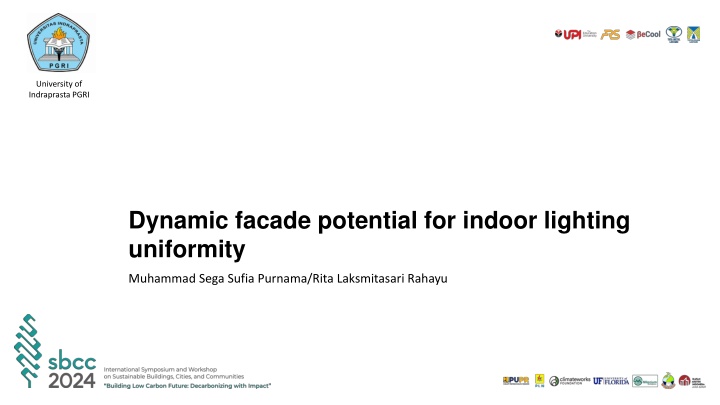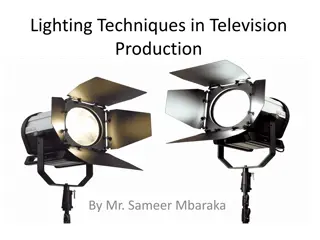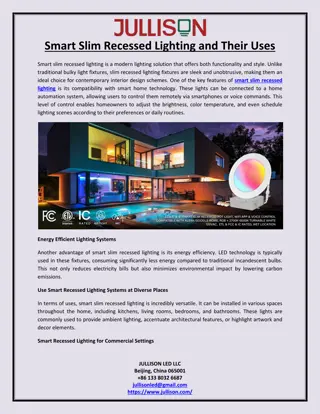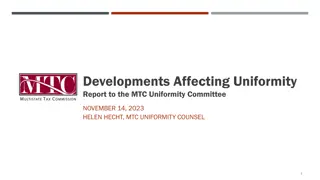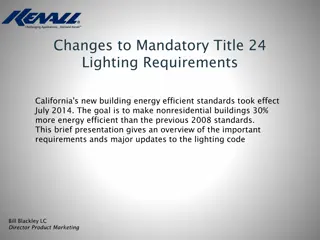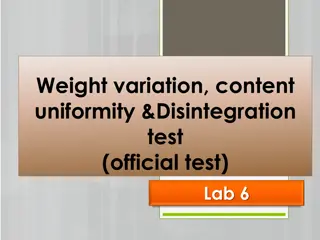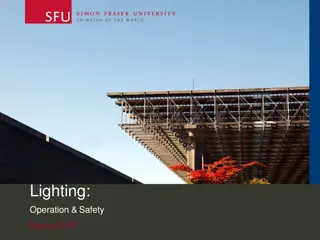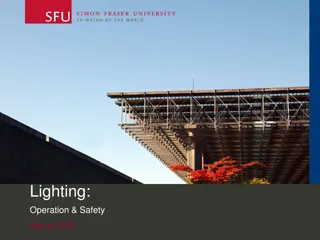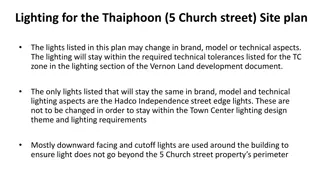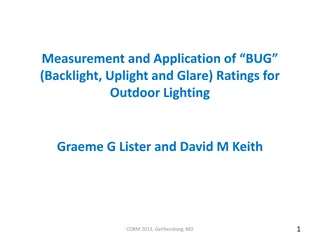Dynamic Facade Potential for Indoor Lighting Uniformity Research
Research conducted at University of Indraprasta PGRI explores the potential of dynamic facades for achieving lighting uniformity in indoor spaces using simulations and analysis. The study evaluates the effectiveness of dynamic facade components in improving lighting distribution and visual comfort compared to static facades.
Download Presentation

Please find below an Image/Link to download the presentation.
The content on the website is provided AS IS for your information and personal use only. It may not be sold, licensed, or shared on other websites without obtaining consent from the author.If you encounter any issues during the download, it is possible that the publisher has removed the file from their server.
You are allowed to download the files provided on this website for personal or commercial use, subject to the condition that they are used lawfully. All files are the property of their respective owners.
The content on the website is provided AS IS for your information and personal use only. It may not be sold, licensed, or shared on other websites without obtaining consent from the author.
E N D
Presentation Transcript
University of Indraprasta PGRI Dynamic facade potential for indoor lighting uniformity Muhammad Sega Sufia Purnama/Rita Laksmitasari Rahayu
University of Indraprasta PGRI Introduction Uniformity of lighting is one aspect of visual comfort that needs to exist in a room One way to get it is with artificial lighting Natural lighting is the best alternative to artificial lighting because it is free, abundant and healthy The facade is the element of the building that directly receives sunlight. This element is generally static and does not move The potential of moving facade components to be able to create even distribution of light needs to be investigated as a possible energy saving solution The purpose of this research is to look at the potential of dynamic facades for lighting uniformity in a room. Dynamic facade potential for indoor lighting uniformity| Muhammad Sega Sufia Purnama
The initial step of the research began with making a room model measuring 5 x 5 m and 3 m high. Then determine the opening in the west direction. The opening is a window with a size of 2.8 x 4.5 m. The first model will be shaded with horizontal slats which has dimensions of 0.1 x 5 m and 15 cm between one and another. The second model has the same size slats but it will be rotated so that it moves dynamically following the height of the sun. . After the simulation, analysis and conclusion will be done. University of Indraprasta PGRI Method 1 pm - 5 pm Dynamic facade potential for indoor lighting uniformity| Muhammad Sega Sufia Purnama
University of Indraprasta PGRI Result and Discussion After the model is completed, the simulation time will be set from 1 pm to 5 pm. The month are set for March 20, June 21, September 23 and December 22 simulation date and Dynamic facade potential for indoor lighting uniformity| Muhammad Sega Sufia Purnama
University of Indraprasta PGRI Result and Discussion The value of lighting equalization in condition 1 has a relatively small value, namely, below 20 percent. This is due to the high intensity of light entering the room without obstruction resulting in high contrast. Condition 2 uses a static facade. The value obtained is higher in comparison with condition 1. This is due to the presence of a shade that makes the light contrast not occur too large. Condition 3 uses a shade that rotates with the sun every hour. The comparison value tends to decrease but, when viewed, the value of the decrease is not as fast as condition 2. Example, on March 20, at 1 pm, condition 2 is better at 0.29 and condition 3 is 0.27. Then at 2 pm the value of condition 2 drops at 0.25 while condition 3 is still 0.27. Dynamic facade potential for indoor lighting uniformity| Muhammad Sega Sufia Purnama
University of Indraprasta PGRI Conclusion Judging from the three facade conditions, condition 3, namely the dynamic facade, has the smallest decrease in lighting uniformity. This shows that the longest lighting uniformity occurs in condition 3. This research can be continued by reviewing other aspects such as opening orientation, facade shape, form of movement, facade mechanics and others. Dynamic facade potential for indoor lighting uniformity| Muhammad Sega Sufia Purnama
